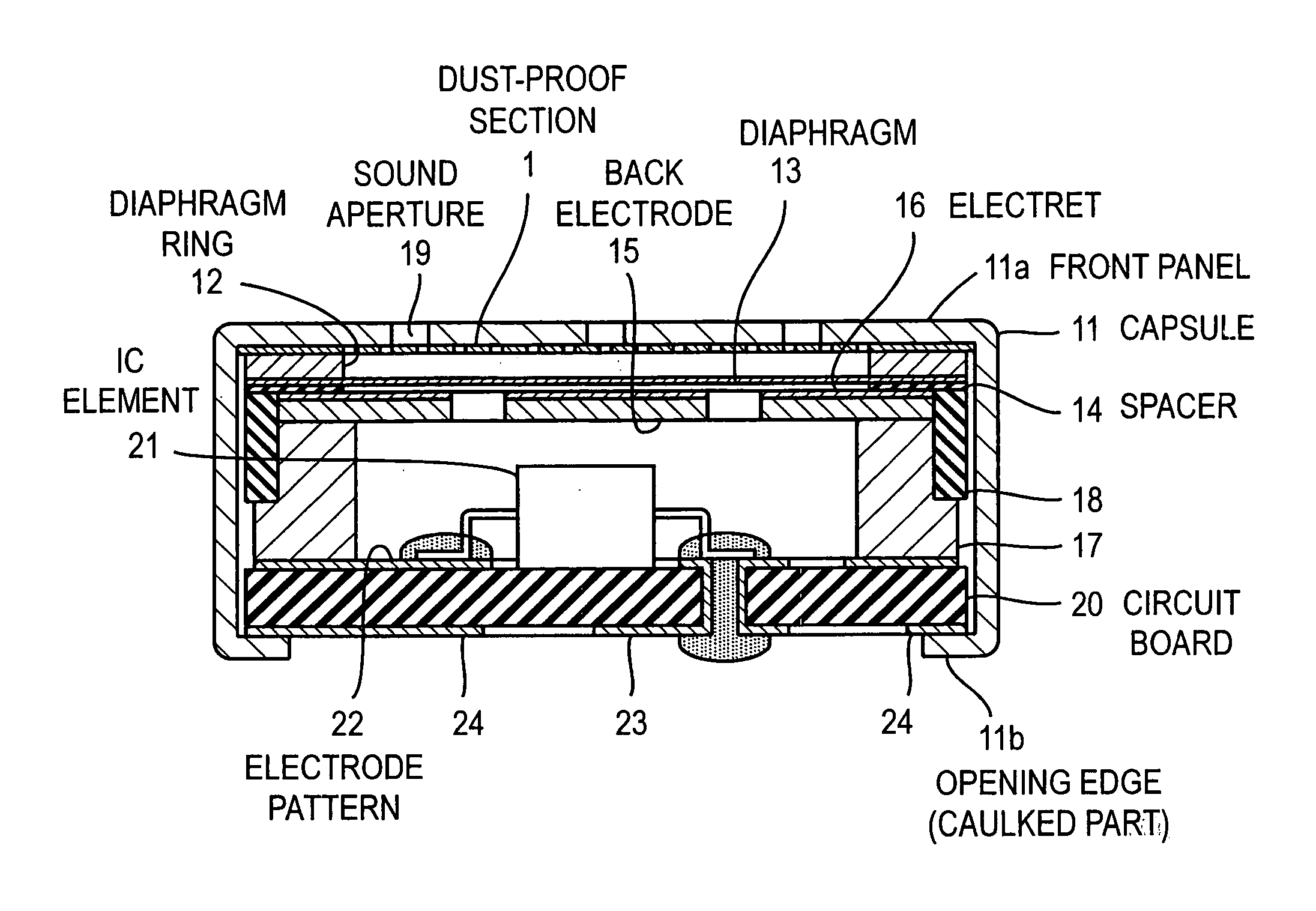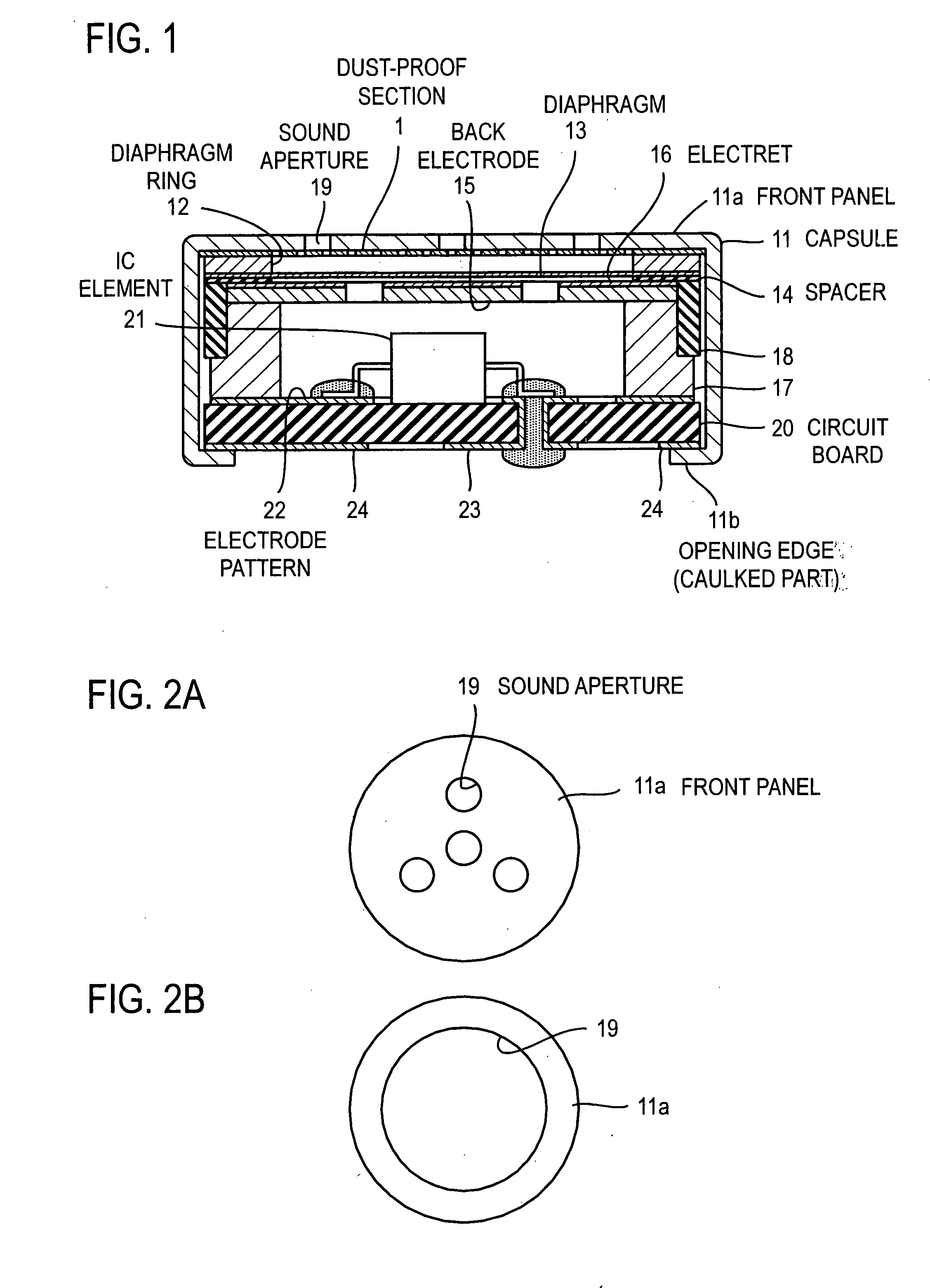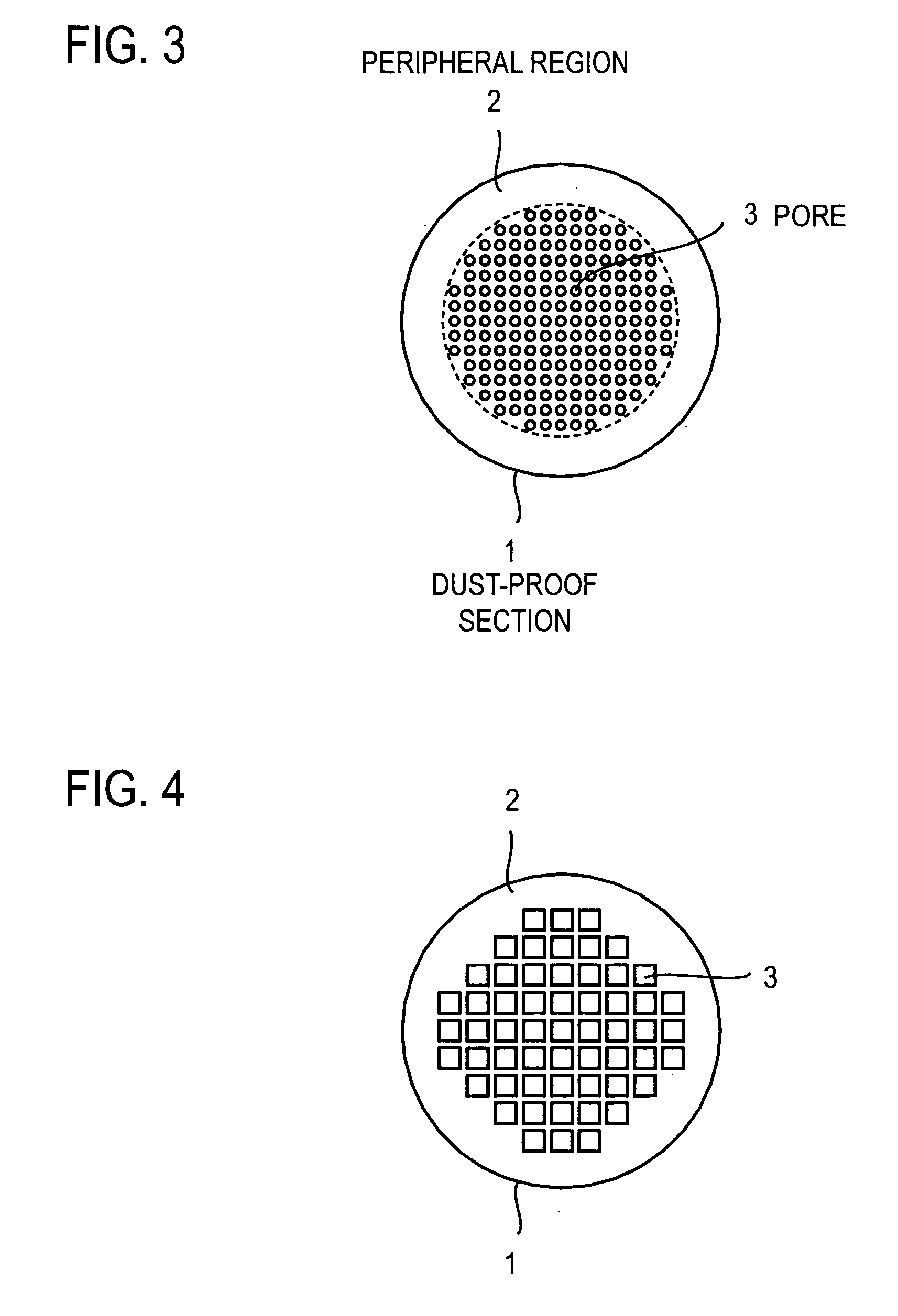Microphone
a microphone and microphone technology, applied in the field of microphones, can solve the problems of inability to automate the entire fabrication process including dust-proof treatment, difficult to automate the cloth attachment step, and the cloth cannot endure the heating during the process, so as to achieve the effect of not reducing the sound pressure applied
- Summary
- Abstract
- Description
- Claims
- Application Information
AI Technical Summary
Benefits of technology
Problems solved by technology
Method used
Image
Examples
first embodiment
[0021]FIG. 1 is a cross-sectional view of an example of an electret condenser microphone. Referring to FIG. 1, a cylindrical capsule 11 houses an electret condenser. To house built-in components such as the electret condenser, an opening of the capsule 11, which is opposite to a front panel 11a of the capsule 11, is sealed by a circuit board 20.
[0022] Viewed from the side of the front panel 11a, the capsule 11 houses a dust-proof section 1, a diaphragm ring 12, a diaphragm 13, a ring-shaped spacer 14, a back electrode 15, an electret 16, a cylindrical conductive body 17 mounted on the circuit board 20, and an insulating ring 18 fitted on the outer peripheries of the back electrode 15 and the cylindrical conductive body 17. The electret condenser comprises the diaphragm 13 stretched on the diaphragm ring 12, the ring-shaped spacer 14, and the electret 16, which covers the surface of the back electrode 15 facing to the front panel 11a. In general, the electret 16 is made of tetrafluo...
second embodiment
[0034]FIG. 7 shows an arrangement of a microphone according to this embodiment. In the embodiment 1, the dust-proof section 1 is disposed inside the front panel 11a of the capsule 11, and then the diaphragm 13 and the back electrode 15 are disposed in this order. However, in this embodiment, a dust-proof section 1 is disposed inside a front panel 11a, and then a back electrode 15 and a diaphragm 13 are disposed in this order. Then, a diaphragm ring 12 and a gate ring 25 are disposed. An electret 16 is disposed on the surface of the back electrode 15 facing to the diaphragm 13. The diaphragm 13 is electrically connected to a circuit board via the gate ring 25. An FET element 21a and a capacitor 21b are mounted on the inner surface of the circuit board 20. In addition, a terminal substrate 20a having a step protrudes from the outer surface of the circuit board 20. This is provided to prevent a caulked part 11b from being adversely affected by melting of solder 26 in a reflow furnace. ...
third embodiment
[0035]FIG. 8 shows an arrangement in which a front panel 11a of the capsule 11 serves also as a back electrode. In this microphone, a dust-proof section 1 is disposed inside the front panel 11a, and an electret 16 is disposed inside the dust-proof section 1. Then, a diaphragm 13 and a gate ring 25 are disposed in this order. Since an integral part doubles as the back electrode and the front panel 11a, and the electret 16 is disposed on the dust-proof section 1, the microphone can be extremely thin. In this embodiment, there is provided an insulating film 27 for insulating the capsule 11.
PUM
 Login to View More
Login to View More Abstract
Description
Claims
Application Information
 Login to View More
Login to View More - R&D
- Intellectual Property
- Life Sciences
- Materials
- Tech Scout
- Unparalleled Data Quality
- Higher Quality Content
- 60% Fewer Hallucinations
Browse by: Latest US Patents, China's latest patents, Technical Efficacy Thesaurus, Application Domain, Technology Topic, Popular Technical Reports.
© 2025 PatSnap. All rights reserved.Legal|Privacy policy|Modern Slavery Act Transparency Statement|Sitemap|About US| Contact US: help@patsnap.com



